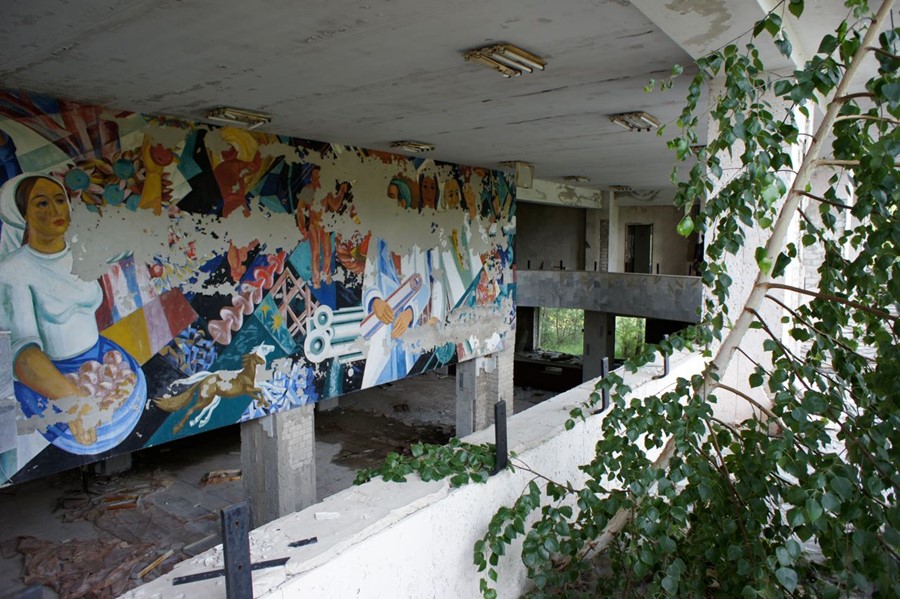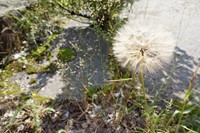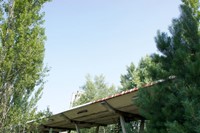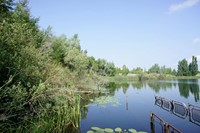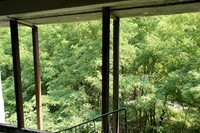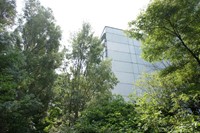Prypiat, Ukraine, was evacuated after the Chernobyl explosion spread radiation through the town in 1986. Today, the town remains deserted, surrounded on all sides by an exclusion zone of empty rivers, silent forests and abandoned farms...
In the wee hours of April 26, 1986, a controlled safety test began inside reactor number four at the Chernobyl nuclear power station in the Ukraine. Within a minute, though, things began to go badly wrong, rapidly leading to a runaway nuclear reaction. The resulting explosion and fire led to the release of a vast cloud of radioactive particles, which eventually spread as far as Sweden where it was detected and revealed to the world.
Closer to ground zero – indeed within sight of the stricken reactor – people in the town of Prypiat were asleep when the accident happened, and awoke to a seemingly normal Sunday morning. Some reported hearing strange noises during the night coming from the direction of the plant and while smoke could clearly be seen, officials initially assured people that the situation was under control. Eerie film footage from that day shows residents sunbathing and swimming at the waterfront while gasmasked police wander the streets.
Finally, nearly 24 hours after the explosion, buses began arriving to evacuate the town. Purpose-built in the late 1960s, Prypiat was one of the Soviet Union’s atomograd: atomic cities of the future, deliberately sited near nuclear power stations to both house workers and demonstrate the safety of this high-tech energy source. Ironically, if it hadn’t been for the safety test – designed to check that back-up power would come online in time in the event of a power loss – Chernobyl might never have become a synonym for disaster.
Instead, the accident has left Prypiat a ghost town, forever frozen in Soviet 1986. When residents left, notices told them to “please make sure you have turned off the lights, electrical equipment and water off and shut the windows. Please keep calm and orderly in the process of this short-term evacuation.” In the end, those who hastily packed what they could were never allowed to return. Today, the town remains deserted, surrounded on all sides by an exclusion zone of empty rivers, silent forests and abandoned farms.
To get there involves a two-hour journey north from Ukraine’s capital, Kiev, and a series of security checks starting about thirty miles from the plant. Spread unevenly around the disaster area, the exclusion zone’s closely-guarded borders are based on the prevailing winds and rains at the time of the disaster. Unless you’re a worker, resettler or researcher, gaining access is difficult. After opening officially for small groups of tourists earlier this year, the zone was closed again this June while officials revise their guidelines.
After passing through the first checkpoints, the roads become eerily empty. Wild horses can be seen running through the fields, and before long the reactor building comes into view. As you near Prypiat, the city itself is far from obvious. Travelling down the main avenue leading into town is like driving through a forest, but for occasional glimpses of apartment blocks through the trees. It’s not until you pull up in the main square that the full scale of what’s now hidden becomes clearer. At one end of a long expanse of tarmac pierced by trees and grass, a building topped by a hammer and sickle emblem stands empty. At the other, former roads lead off into the distance. Though it’s the abandoned school classrooms, piles of gas masks and rusting amusement park that are highlighted on all the disaster tourism sites, there are less obvious things to observe.
Throughout the town, it’s incredible to watch nature reclaiming the land and the architecture. Seen from the rooftops, Prypiat’s tower blocks now sit amid a vast and ever-growing forest. At the waterfront, steps descend into a marsh teeming with life. Inside the cultural centre, café and gymnasium, birch trees rises from floorboards. In the rooms above the municipal swimming pool, ferns sprout from old books. Throughout, there is a sense of nature as an all-conquering force, and one that will eventually prevail: an all-too-rare feeling these days.
Of course, it’s important not to forget that these were once people’s homes – a fact that’s impossible to overlook as you walk reverently through their former lives. But the fact this new town was built only sixteen years before the disaster reminds us how much faster we make our own mark on the land. After the area’s brief dalliance with modernity, it’s slowly returning to what it was before. The rest of the planet may not get that chance.
super/collider travelled to Prypiat as part of the AA School of Architecture’s Unknown Fields programme. For more, visit here.
